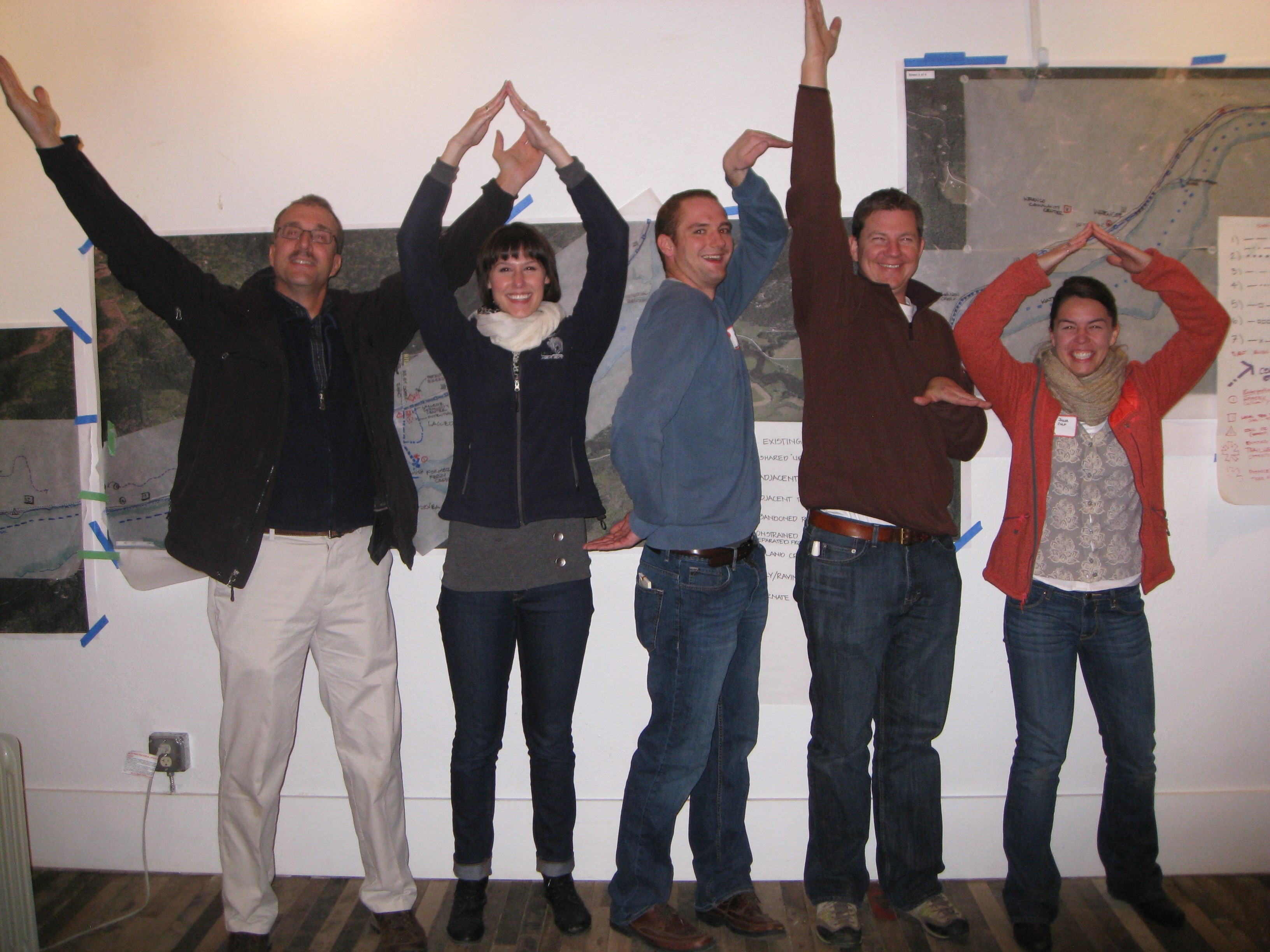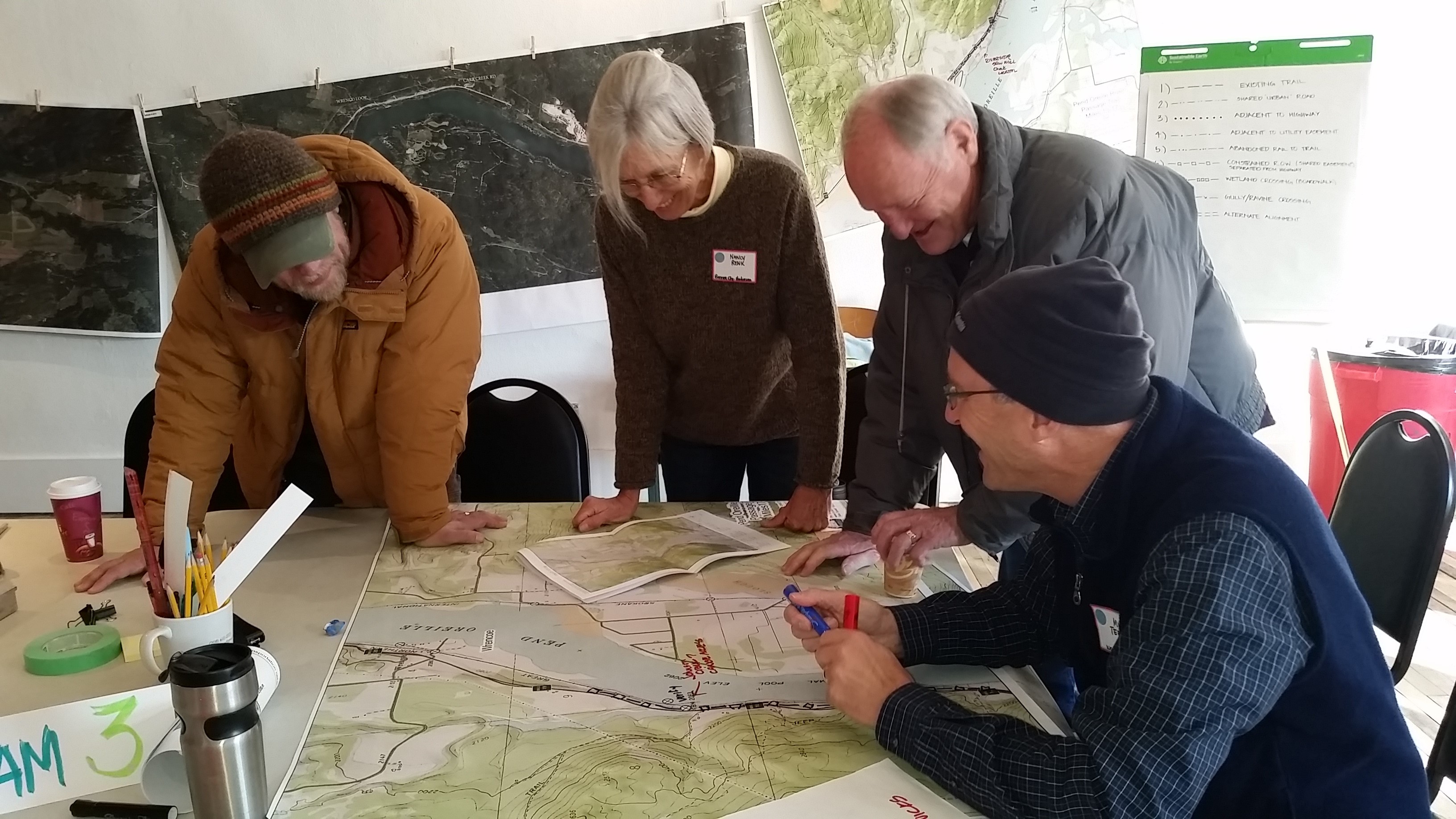Eastern Washington Report: Pend Oreille River Passage Trail Charrette
This November was full of "firsts" for me: I got bangs, I tried candied bacon, and I participated in a design charrette for the first time. Although my new hairstyle is "bangin’" and candied bacon is a revelation, I'm going to focus on the wonderful experience I had participating in the Pend Oreille River Passage Trail Charrette. WASLA joined forces with the National Park Service's River & Trails (RTCA) program, the Priest Community Forest Connection (PCFC), and the Idaho/Montana chapter of the American Society of Landscape Architects (IMASLA) to lead the design charrette of a 25-mile long stretch of trail connecting four communities in Bonner County. If you didn't think that 25 miles of trail design was challenging enough, imagine 25 miles of uneven terrain, ROW sandwiched between rock cliffs and deep ravines, unknown property ownership, and vast stretches of operational railroad. To think that we were supposed to present our design ideas the very next day, made this task seem even more daunting. This being my first time participating in a charrette, I felt completely overwhelmed. Luckily for me, I was accompanied by Spokane landscape professionals Mike Terrell, Julia Culp, Craig Andersen, and Mike Tressider, with the help of WSU Landscape Architecture Student Kyle Braun. Together, we were a strong team full of varied skills and professional practice. As soon as our time began, a flourish of activity ignited. A roar of 'Q & A' sessions enveloped the space of the Beardmore Building; trash paper crinkled under the pressure of furiously moving pens; team members shared their findings from the driving tour the day before; and team leaders did all they could to synthesize this information into a consolidated set of lines, symbols, and content. Although we were considered the professionals for this design charrette, we couldn't have done it without the regional knowledge, support, and passion of the local community members. Sure, we understand the design process. We have an idea or two about how to deal with site constraints, and how to highlight site opportunities. We have graphic prowess with Staedtler pens and Chartpak markers. We know how to interpret code and apply it to the design solution. But without the local community members' drive to see this project succeed, we wouldn't have had a place to start. They fed the design. They knew the ins and outs, the nooks and crannies, the history and facts of the area, all of which drove the design in the right direction to better serve the community. This level of personal investment and collaboration is what made my first design charrette one of the best professional experiences of my career thus far. So, despite my initial fear of the whirlwind weekend ahead of me, when the charrette presentation came to a close I felt an overwhelming sense of togetherness and accomplishment. Although our time spent together was short and hectic, in the end we all wanted to see this project succeed. I have every belief that it will. -Laura L. Thompson
|


